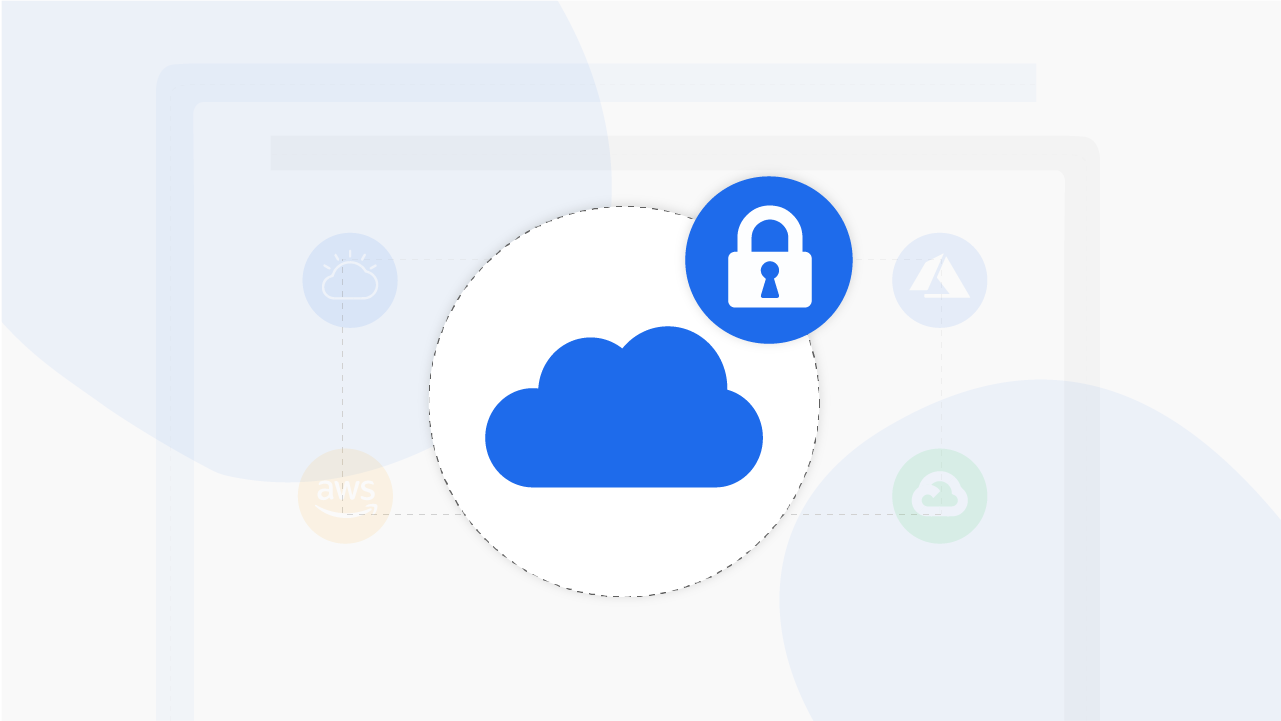Blogs Home
How a Multi-Cloud Strategy can help you avoid vendor lock-in
Published on Dec 28, 2020
4 min read

Avoiding vendor lock-in is undoubtedly the most cited reason for the need of a multi-cloud strategy among the many other benefits associated with multi-cloud. Since Multi-cloud strategy is based on the use of multiple cloud computing services hosted from different private and public cloud providers, companies use multi-cloud environments to distribute computing resources and minimize the risk of downtime and data loss. In a recent State of the Cloud survey, more than 80% of enterprises reported medium to high levels of concern about being locked into a single public cloud platform.
How vendor lock-in is seen by an enterprise depends entirely upon its goals. For some enterprises, avoiding a vendor lock-in is a core business requirement or a way to achieve greater portability for their applications. With such portability it gets easier for them to move applications to and across platforms. So it is quite evident that more and more enterprises find the multi-cloud approach to be the most optimal for their businesses when it comes to situations like vendor lock-in.
Risks associated with vendor lock-in
Following are the primary lock-in risks that are involved in working with a single cloud provider that make it difficult for you to migrate across multiple clouds:
Data transfer risk
It is not so easy to migrate all of your data from one Cloud Service Provider to another since there are a number of risks associated with it and multiple factors that need to be considered. These include suitable and reliable data extraction methods, maintaining data integrity, data translation, data transferring without the loss of application’s functionality, and time and cost analysis.
Application transfer risk
The risk of reconfiguration of applications, running on your current environment, to run natively on another provider can be an extremely complex and difficult process. One of the main reasons for this difficulty and complexity is the lack of standard interfaces and open APIs since every Cloud Service Provider has their own specifications and standards, which make it very tough to move from one CSP to another.
Infrastructure transfer risk
Every major CSP does things a little bit differently in regards to their offerings and pricing plans. For example, their VMs and their associated pricing may vary from other vendors or their database offering and formats may differ too. This makes it difficult to ensure that you have the appropriate resource usage and cost savings if you switch providers. This requires proper planning & detailed assessment to help you choose the appropriate cloud for your applications.
Significance of multi-cloud architecture
With a Multi-cloud architecture implemented, enterprises are able to distribute their workloads across multiple cloud environments in order to get the biggest bang for their buck while mitigating risks associated with individual cloud environments. This value proposition alone is enough to justify the widespread growth and adoption of multi-cloud infrastructure solutions among the enterprises in the near future.
Optimized IT Spend
Every cloud is built differently. These differences are not only in the physical infrastructure components but also exist in a diverse range of characteristics, pricing models and policies, among other aspects. Therefore, the right fit is determined on the basis of each individual metri for individual apps, and for individual business needs. This results in compromised choices and unnecessary tradeoff.
A Multi-cloud infrastructure offers a rich set of cloud options to solve your needs across a diverse range of computing and business functions, thereby optimizing returns on cloud investments. Therefore,in a multi-cloud environment you have the liberty to go with whatever cloud resources that are being offered without having to compromise on any of your choices.
More secure and less prone environment
Since your infrastructure is hosted by vendors having multiple data centers within each geographic region, any outages that occur can cause significant disruptions on your end. But with a multi-cloud environment implemented, you have independent copies of your workloads on other cloud servers, which can be deployed without causing any disruption on your end in case of an outage. This way you can minimize the risk of your business being affected.
On top of that, a Multi-cloud environment allows enterprises to maintain an environment such that it enables a combination of security and cost savings at the same time. The most critical and security-focused applications are kept in the private cloud while the regular business data and applications are kept in cost-effective public cloud networks.
High Accessibility and Low Latency
Accessing data and apps stored at distant locations across the cloud network is not instantaneous. The data travels across several nodes before reaching end-users resulting in minor delays. Such latency issues caused by data traveling significant distances, can be easily avoided by adopting a multi-cloud infrastructure. Using multiple vendors helps in achieving faster speed and improved applications’ user experience as the datacenter closest to end-users can serve the respective data request with minimum server hops. This capability is very important and useful for global enterprises that need to serve corporate data across geographically disparate locations while maintaining a smooth and uniform end-user experience.
Join our newsletter
Sign up for the latest news about Wanclouds.